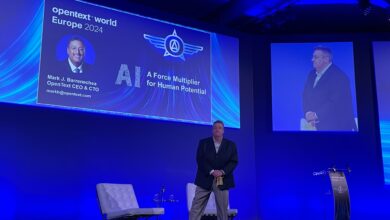
The well-known phrase ‘The best laid plans…’ usually trails off mid-sentence. It’s so commonplace that we need to hear only the beginning to know it’s a reference to the inevitability of things going wrong despite careful planning.
Former president Dwight D. Eisenhower famously said, “In preparing for battle I have always found that plans are useless but planning is indispensable.” Strongly formulated plans – and the ability to adapt and be flexible, powered by intelligent features like recommendations and reallocations – should have built-in parameters and contingencies that can help them weather challenges and stay on track.
After recent disruption, businesses and people crave stability. Trying to keep up on the fly is exhausting, stressful and only sustainable in the very short term. Now that businesses have been stretched to the max, it’s time to help them recover by putting some of that predictability back in.
Technology is a vital resource in getting business back on track. It is there to ease the strain by taking over mundane processes, it can ingest data accurately and explore trends to identify where the business can be more efficient. Add artificial intelligence (AI) to technologies such as databases and project management tools, and you can begin to predict future challenges and prepare for them.
Don’t miss out because of bad data
McKinsey estimates that $1m is wasted every 20 seconds on project management tasks that could have been automated – this adds up to a $438b annual problem (McKinsey,PWC, PMI). But projects will only be as good as the data used in their planning. And it’s very difficult to predict a project outcome and set parameters if there’s no historic data available. This is where businesses must help themselves.
It shouldn’t be the case that this adds more to an already teetering pile of work. If a company institutes a good data policy, keeping it up to date and accurate should simply be a matter of habit. At Forecast we always work with project managers to help them understand where critical data is going missing – time registration is a common culprit – and how to bring data sets together from the various tools they commonly use.
With a gentle nudge that can trickle down across the business: project managers become more descriptive in their tasks and more attentive to updates, feeding any potential AI system with the accurate details it needs to build predictive, protective models for the future.
Build a prediction tailored to your needs
The great thing about enacting data due diligence in a frictionless, consistent, and engaging way is that you can build predictions that are highly tailored to your own business’s needs. Data varies from company to company, which is why a customised model is the best way to make sure parameters are designed to meet your own circumstances.
AI-powered platforms help you to get a comprehensive view of future possible outcomes. This is done by assessing external information to build an industry baseline and then tuning this to your own company’s situation through proprietary data. Then, diving back down into your own business, see how that information can be specialised to your processes, refining them as you go to save time and resources.
Machine learning can step in here and teach itself, based on the data you’ve provided, to recognise the patterns that point the way to more efficient project management. Even if you are taking on a project that’s new to you, somewhere something similar will have been done before. Machine learning can ingest that information, apply it to corresponding data internally – across all functions and business units – and build out an ideal scenario.
In a perfect world, nothing would turn up to send your plans sideways but we don’t live in a perfect world. However with machine learning, you can make a better plan from the outset. A better plan helps keep track of all key metrics and enables you to monitor how things are progressing. And it will alert you of something that could risk derailing things.
Say, for example, a website design typically takes three days, but what if something untoward occurs? What’s your worst-case scenario? What’s your appetite for risk and how much variance do you build in so your plan can revise timings and provide actions should something get in the way? Machine learning makes you aware of the risk before it’s too late and helps you focus on the solution.
Predictability is the original win-win. It’s the key to keeping customers happy, and it’s the key to keeping employees happy. As I said at the start, no-one functions well in a state of high stress. Stability and resilience are the opposite of a high stress environment and great leadership means striving to provide those via predictability wherever possible.





